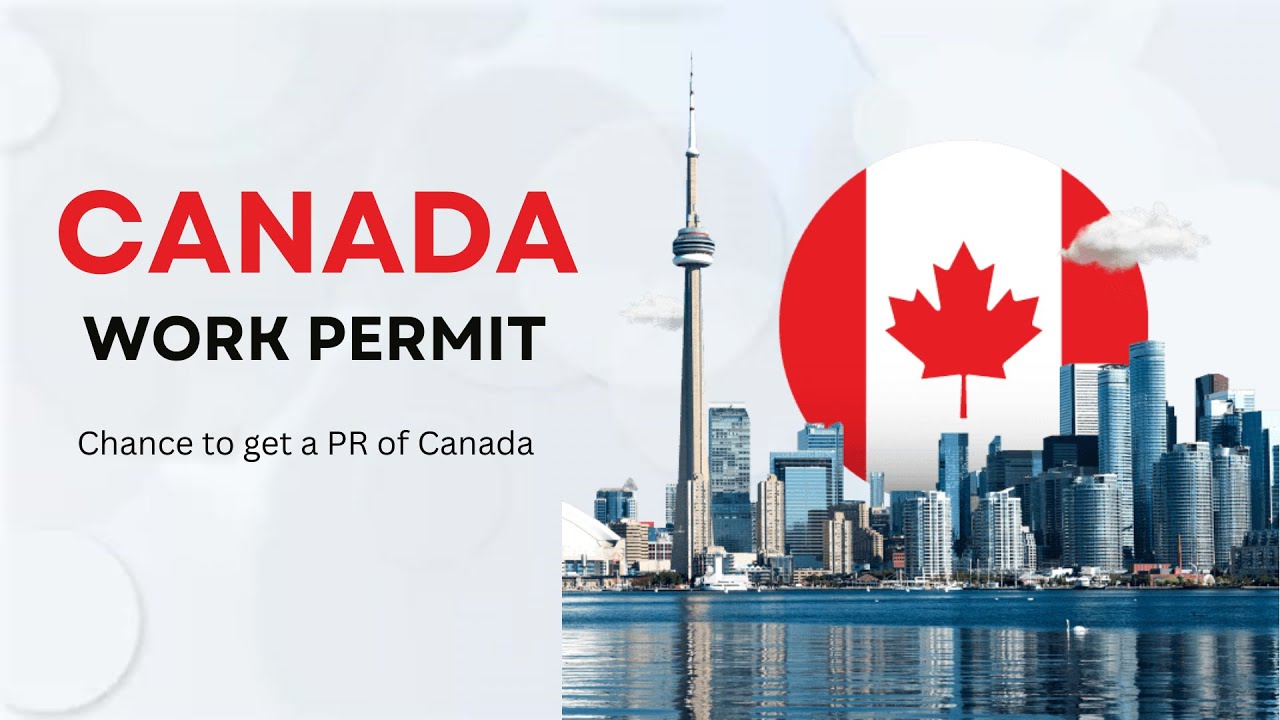Canada Work Permit Requirements – A Comprehensive Guide – Canada is renowned for its high quality of life, diverse culture, and robust economy, making it a popular destination for foreign workers.
To legally work in Canada, most foreign nationals require a work permit. This article will provide an in-depth look at the requirements for obtaining a work permit in Canada, ensuring a clear understanding of the process for prospective applicants.
Types of Work Permits
Canada offers two main types of work permits:
- Employer-Specific Work Permit
- Open Work Permit
Employer-Specific Work Permit
An employer-specific work permit, as the name suggests, allows you to work for a specific employer in Canada. This permit includes details such as the employer’s name, the duration of employment, and the location of the job.
To obtain this permit, you must have a job offer from a Canadian employer who has obtained a Labour Market Impact Assessment (LMIA), unless exempted. Canada Work Permit Requirements – A Comprehensive Guide.
Open Work Permit
An open work permit is not tied to a specific employer. This type of permit allows you to work for any employer in Canada, with some exceptions. Open work permits are typically issued to:
- Spouses or common-law partners of skilled workers or international students.
- International students who have graduated from a designated learning institution (DLI).
- Participants in certain programs, such as the International Experience Canada (IEC).
General Requirements for a Canada Work Permit
Regardless of the type of work permit, there are several general requirements that all applicants must meet:
Proof of Job Offer
For an employer-specific work permit, you must provide a job offer letter from your Canadian employer. This letter should outline the terms of employment, including job title, duties, salary, and duration of employment.
Labour Market Impact Assessment (LMIA)
An LMIA is a document issued by Employment and Social Development Canada (ESDC) that allows an employer to hire a foreign worker. The LMIA process ensures that hiring a foreign worker will not negatively impact the Canadian labor market.
Some jobs are exempt from the LMIA requirement, such as those under international agreements (e.g., NAFTA), certain intra-company transferees, and jobs that provide significant social or cultural benefits to Canada.
Proof of Financial Support
Applicants must demonstrate that they have enough money to support themselves and their family members during their stay in Canada and to return home.
Proof of No Criminal Record
You may need to provide a police clearance certificate from your home country or any country where you have lived for six months or more since the age of 18.
Medical Examination
A medical exam may be required to ensure that you are in good health and do not pose a risk to the public health and safety of Canadians. This is especially relevant for applicants who will work in healthcare, with children, or in primary or secondary school teaching positions.
Proof of Ties to Home Country
You must demonstrate that you have strong ties to your home country and intend to return home after your work permit expires. This can include proof of property, family ties, employment, or other obligations.
Specific Requirements for Employer-Specific Work Permits
Job Offer and LMIA
For an employer-specific work permit, the Canadian employer must provide you with a job offer and obtain an LMIA from ESDC, unless the job is LMIA-exempt.
The LMIA process involves the employer proving that there are no Canadian citizens or permanent residents available to fill the position and that hiring a foreign worker will not negatively affect the Canadian labor market.
Employment Contract
The employment contract should outline the job duties, salary, and conditions of employment. It should be signed by both the employer and the employee.
Compliance with Employment Laws
Employers must comply with Canadian employment laws, including offering wages and working conditions that meet provincial or territorial standards.
Specific Requirements for Open Work Permits
Eligibility Categories
Open work permits are generally available to certain groups of individuals, such as:
- Spouses or Common-Law Partners of Skilled Workers or International Students: If your spouse or common-law partner is a skilled worker or international student in Canada, you may be eligible for an open work permit.
- International Students: Graduates of designated learning institutions in Canada may be eligible for a Post-Graduation Work Permit (PGWP).
- International Experience Canada (IEC): This program allows young people from participating countries to work in Canada temporarily.
No Job Offer Required
Unlike employer-specific work permits, open work permits do not require a job offer or an LMIA. This provides more flexibility in terms of employment opportunities.
Application Process for a Canada Work Permit
Step 1: Determine Eligibility
Before applying for a work permit, you must determine your eligibility based on the type of work permit you need. This includes ensuring you meet the general requirements and any specific requirements for your permit category.
Step 2: Gather Required Documents
Gather all necessary documents for your application. This typically includes:
- Valid passport
- Job offer letter
- LMIA (if required)
- Proof of financial support
- Police clearance certificate
- Medical exam results
- Proof of ties to your home country
- Any additional documents specific to your situation
Step 3: Complete the Application Form
Complete the appropriate application form for your work permit. This can typically be done online through the Immigration, Refugees and Citizenship Canada (IRCC) website.
Step 4: Pay the Application Fee
Pay the required application fee. The fee for a work permit varies depending on the type of permit and the applicant’s country of residence.
Step 5: Submit Your Application
Submit your completed application along with all required documents and the application fee. You can submit your application online or by mail, depending on your location and the specific requirements of your application.
Step 6: Biometrics Appointment
In most cases, you will be required to provide biometrics (fingerprints and a photo) as part of your application. You will receive instructions on how to provide biometrics after you submit your application.
Step 7: Wait for Processing
The processing time for work permit applications varies depending on the type of permit and the applicant’s country of residence. You can check current processing times on the IRCC website.
Step 8: Receive Decision
Once your application is processed, you will receive a decision. If approved, you will receive a Port of Entry (POE) Letter of Introduction, which you will need to present to the border services officer when you arrive in Canada. If your application is denied, you will receive a letter explaining the reasons for the denial.
Step 9: Arrive in Canada
When you arrive in Canada, present your POE Letter of Introduction to the border services officer along with your passport and any other required documents. The officer will issue your work permit at the port of entry.
Post-Arrival Requirements
After arriving in Canada and receiving your work permit, there are several important requirements and considerations to keep in mind:
Maintain Legal Status
You must maintain your legal status in Canada by complying with the conditions of your work permit. This includes working for the employer specified on your permit (if applicable), adhering to the job duties outlined in your employment contract, and not exceeding the authorized duration of your stay.
Apply for Social Insurance Number (SIN)
To work in Canada, you will need a Social Insurance Number (SIN). You can apply for a SIN at a Service Canada office by providing your work permit and other required documents.
Adhere to Canadian Laws
While working in Canada, you must comply with all Canadian laws, including labor laws and tax regulations. Ensure that your employer adheres to the employment standards set by the province or territory where you are working.
Extend or Change Work Permit
If you wish to extend your stay or change your work permit conditions (e.g., change employers), you must apply for an extension or a new work permit before your current permit expires. You can do this online through the IRCC website.
Pathways to Permanent Residency
Many foreign workers in Canada may be eligible for permanent residency through various immigration programs. Popular pathways include:
- Express Entry: A points-based system that selects candidates for permanent residency based on factors such as age, education, work experience, and language proficiency.
- Provincial Nominee Program (PNP): Each province and territory in Canada has its own immigration programs that target specific labor market needs.
- Canadian Experience Class (CEC): This program is for temporary foreign workers and international graduates who have gained Canadian work experience.
Conclusion
Obtaining a work permit in Canada is a multi-step process that requires careful preparation and adherence to specific requirements.
Whether you are applying for an employer-specific work permit or an open work permit, understanding the eligibility criteria, application process, and post-arrival requirements is crucial for a successful application.
By following the guidelines outlined in this article, you can increase your chances of obtaining a work permit and starting a rewarding work experience in Canada.
Canada’s commitment to welcoming foreign workers is reflected in its comprehensive work permit system, designed to meet the needs of both employers and employees while protecting the Canadian labor market.
As you embark on your journey to work in Canada, ensure you stay informed about any updates to immigration policies and seek professional advice if needed to navigate the process smoothly. Canada Work Permit Requirements – A Comprehensive Guide..










